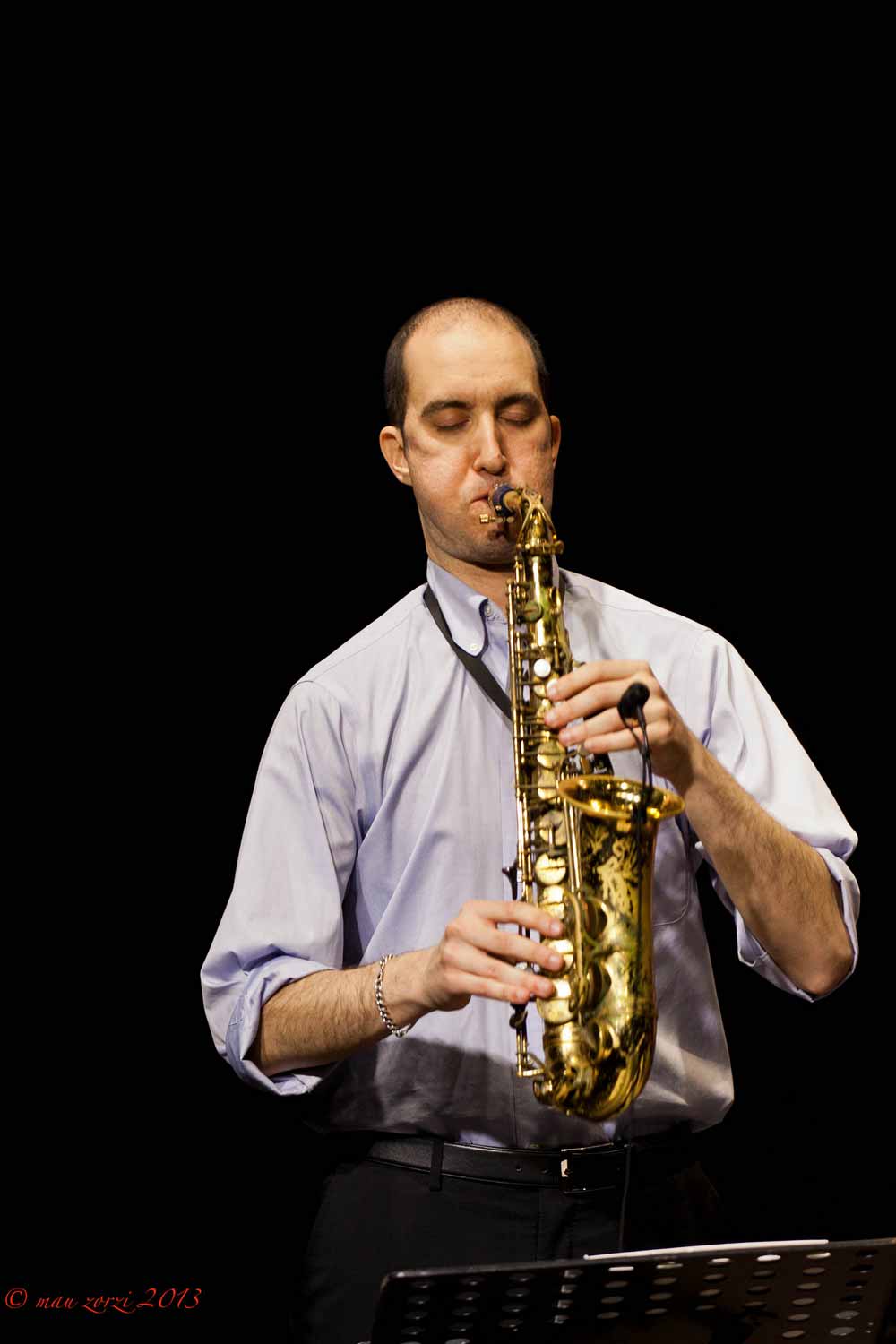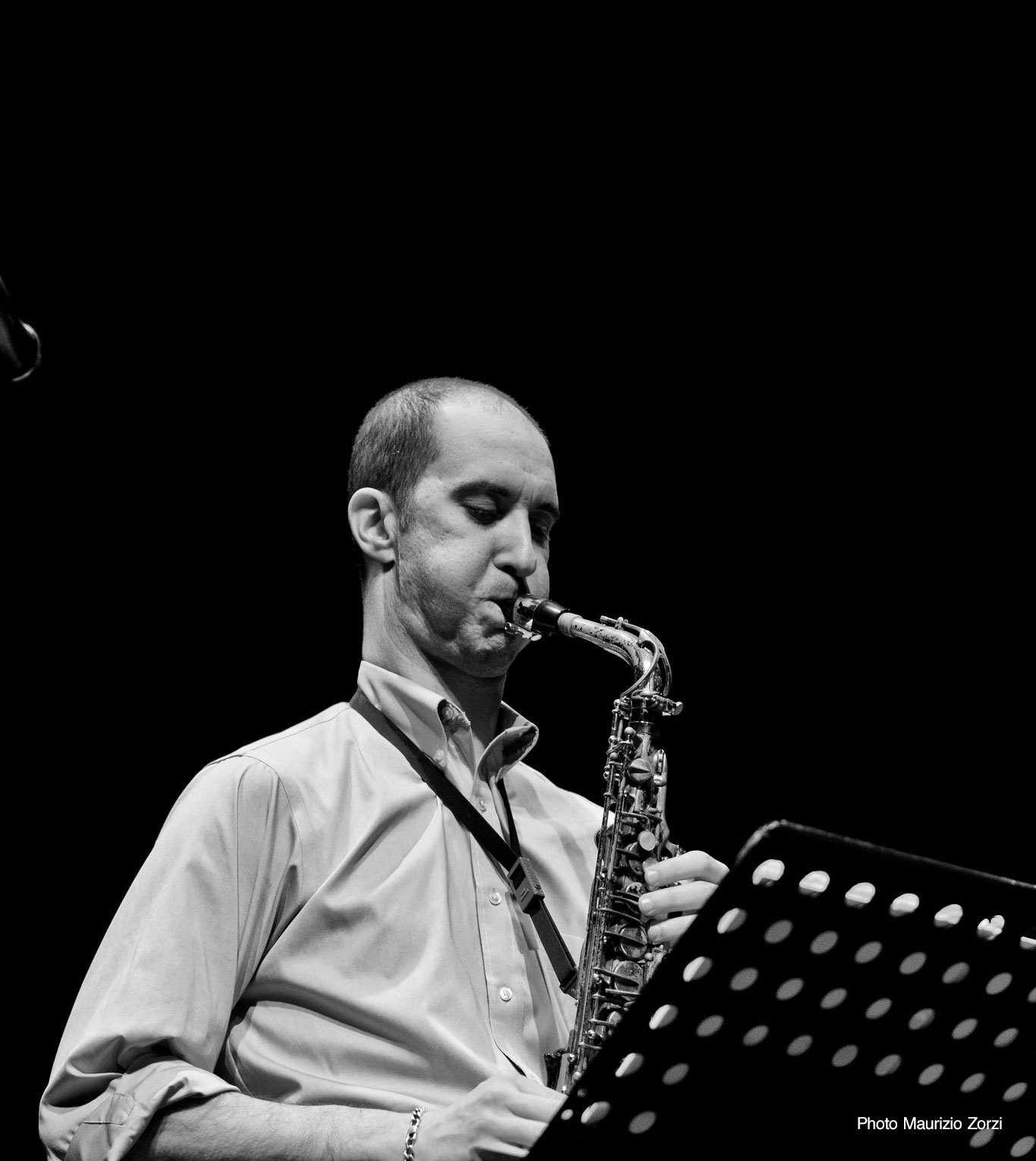 Steve Lehman is one of the most interesting artist of today’s jazz scene. His music includes several innovative elements and his work has been appreciated and recognized all over the world. From his first collaborations with Vijay Iyer and Tyshawn Sorey, the band Fieldwork, to the experiments with electronics and rap, the cd “Sélébéyone”, and lately his last cd with his trio with guest Craig Taborn “People I Love”.
Steve Lehman is one of the most interesting artist of today’s jazz scene. His music includes several innovative elements and his work has been appreciated and recognized all over the world. From his first collaborations with Vijay Iyer and Tyshawn Sorey, the band Fieldwork, to the experiments with electronics and rap, the cd “Sélébéyone”, and lately his last cd with his trio with guest Craig Taborn “People I Love”.
Nicola Fazzini: Hi Steve, first thank you for the time you will dedicate to us. The idea is to introduce the vision of different artists about composing, improvising and researching in music, mostly in jazz.
NF: I had the pleasure to attend two intense masterclasses of yours at the University of Venice and the Conservatory of Bologna. I remember your opening in Venice was right on the point of developing creative compositions that could fit to improvisation. Could you explain to us your approach and how do you balance these two aspects? How do you match the complexity of composing with the spontaneity of the improvisation?
Steve Lehman: Right. I had forgotten that you were at both talks. Well, I often talk about defining the space for improvisation first, when composing for a group of improvisers. And, in some ways, it’s something of an elusive artistic ideal. But, in general, I think that’s the thing to do. Try to find melodies you like, harmonies, rhythms, forms, timbre, and all of that. But, ultimately, what you’re looking for is a collection of musical materials that has and identity and also leads itself to meaningfulness in improvisation. A great improviser can transform anything into something special — or almost anything! So, the role of a composition for a great improviser is maybe to set them up to do what they do best but also to challenge them to discover a new side of their creativity and of their own personal musical language.
NF: The musical material you develop in your music is particularly complex: different rhythmical meters, microtonality, saxophone’s extended techniques, and so on.
What were your influences for this and can you give us an idea about how and why you mix all these approaches?
SL: As far as influences, it’s hard to keep them all straight in my mind at this point. But certainly the creative aesthetic of Be-Bop is somewhat central to me. In particular the way those ideals are embodied by my former teacher, Jackie McLean. Then there are other amazing teachers I’ve had, many of whom I’ve been able to perform with: Anthony Braxton, Tristan Murail, George Lewis, David Wessel, Claude DeLangle, and others. Modern artists like Frank Stella and Sarah Sze, among others. Vijay Iyer is someone who encouraged me to spend a lot of time thinking about Music Cognition and its role in my work as an artist as well. And then the work I’ve done with Computer Music at Columbia University and IRCAM and a few other places as well. HPrizm, one of the founding members of the experimental hip-hop collective Antipop Consortium, has also influenced my approach to sound and to electroacoustic composition a fair amount over the years.
As far as the difficulty and complexity of the musical materials I use, I think that’s mostly a question of familiarity (or lack thereof) more so than true complexity. And, again, it sort of ties back to the creative ideal of discovery in performance and improvisation and composition. All music is complex on some level. But I’m not sure it’s truly possible to discover something new about your own creativity if some element of the music making isn’t challenging you or complex on some level, even if it’s a spiritual challenge or a social one.
NF: How do you organize your work to develop these ideas and how do you practice them?
SL: Well, that’s a good question. I don’t know that I have a good answer for that. I try to take as much responsibility for my development as I can. That can mean practicing standards by myself and trying to internalize the pulse and the harmony. And it can also mean using a computer to create practice tracks that help me to develop more difficult rhythmic techniques and pitch-based work as well, like work with 1/4 tones. There’s a kind of symbiotic relationship that maybe isn’t acknowledged as much as it should be. That is to say that you have to have access to programs like Finale, and ProTools, and Ableton, and Max/MSP (which not everyone has). And then you need to develop proficiency with those interfaces in order to be able to use them as learning/musical tools. And it’s not always very clear cut how one should go about that.
NF: What is your approach in sharing these concepts with the musicians who play in your band?
SL: I don’t know. It really varies from person to person. But I think a general rule of thumb is to try and lead by example. Don’t ask anyone to execute something you yourself haven’t spent a lot of time thinking about and working on. Of course, you have to leave space for the people you’re collaborating with to make the music better than you can make it by yourself. But, I’ve found that a certain rigor needs to be in place if you’re asking other musicians to make any kind of conceptual leap of faith with you. I’m also very lucky in a way, because I’ve been working with a lot of the same musicians for over 17 or 18 years now.
NF: As the historian Hobsbawm said, there are traditions that have been “invented” and the meaning of tradition in itself is somehow artificial. In fact, not all cultures consider or give a meaning to this concept. Do you think that does it makes sense to speak about a “jazz tradition” for a type of music with such a short history? What is your approach to the jazz tradition? What is the balance between tradition and innovation in your vision of music?
SL: Well, when people talk about “jazz tradition” all I’m really thinking about is the notion of “craft” and how incredibly rich and profound those facets of the music are with people like Bud Powell and Woody Shaw and on and on. And that extends to Anthony Braxton and Threadgill and Evan Parker and Mark Dresser and William Parker, and so many others. So, yes, that aspect of tradition is incredibly important and very real to me. I don’t think of it as something that’s been invented. Of course, when it becomes too narrow, that becomes a kind of artificial construction that isn’t particularly productive.
NF: The idea of research in music had a particular value in the last century, especially in the classical modern and contemporary fields. Maybe not engaging a massive audience, but it was considered with respect from musicians, experts and institutions. My feeling, especially in Europe, is that this sensibility has moved toward social aspects: gender balance, supporting young talents, audience development and new media and technology support.
What is your feeling about this and do you think that it makes some sense nowadays to speak about avant-garde and research in music?
SL: I think all substantive music involves some form of significant research. There are various levels of transparency around it. And it maybe gets framed in different ways in different musical traditions. But I think it’s almost always there. I think I know what you’re getting at, and I’m not sure what I can say. Yes, I see a lot of young musicians spending more time on their video shoot than their instrumental technique! But, in general, I think there’s always been a kind of healthy tension between the more specialized aspects of creating original music and the need for more of an intrinsic value. I confess that I’m most interested in those musicians who prioritize the cultivation of more personal vocabularies, somewhat separate from marketplace concerns. But everyone has to find their own comfortable spot inside of these debates.
NF: What are you listening to in this period? Which artists are, in your opinion, doing something innovative and interesting today?
SL: Honestly, I’ve been listening to a lot of the same music for the past 20 years! Listening to a lot of McCoy Tyner these days. I think Eric Wubbels is a terribly underrated composer. Same for Cory Smythe. I’ve been really enjoying Immanuel Wilkins’s emergence on the scene. Peter Evans is always incredible. And then, of course, all the people you’d expect that I’ve been recording with for the past 15 years.


